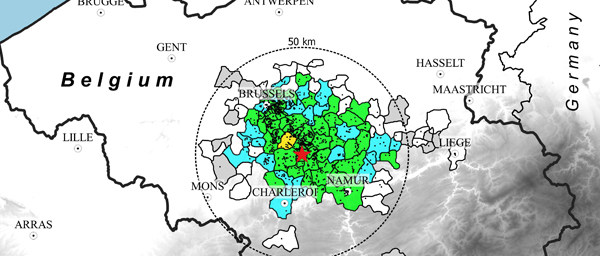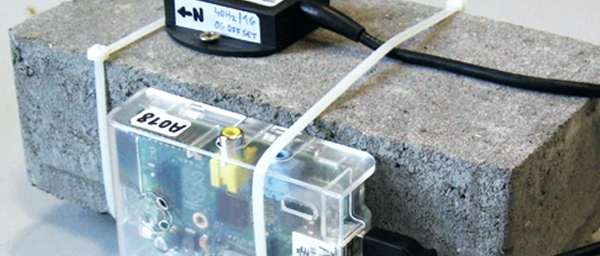

The Royal Observatory of Belgium (ROB) uses the “Did You Feel It?” (DYFI) online survey to map the impact of earthquakes. Since its launch (1925), the questionnaire consists of targeted questions for the population to report the degree of shaking. When earthquakes took place, surveys were sent to the mayors of affected municipalities. Since 2002, in addition to the questionnaire, an online DYFI survey was developed to also collect individual testimonies. When filling in the survey, citizens testify in detail how they experienced an earthquake. They are thus at the heart of the observations that the ROB uses to estimate intensity. The results are averaged for each location/municipality and then converted to the intensity of an earthquake, for which an international standard has been drawn up, the European Macroseismic Scale (EMS98). The results are very important, both for research and for crisis management.
More information on the DYFI survey and associated research is available on the Seismology-Gravimetry website of the ROB ![]() . If you experienced an earthquake, you can take a look on the list of inquiries
. If you experienced an earthquake, you can take a look on the list of inquiries ![]() and fill in the survey.
and fill in the survey.

For the AcceleROB project 90 low-cost accelerometric stations were installed in Belgium to measure real ground movement when a large (larger than normal) earthquake occurs. “AcceleROB” is the English acronym for "Accelerometric station of the Royal Observatory of Belgium". A complete AcceleROB includes: a RaspberryPi microcomputer, a power supply, a network cable, a JoyWarrior Accelerometer and a brick on a tripod. This setup makes it possible to install the accelerometer sensor in basements without having to keep a computer permanently switched on. The station has low power consumption: less than 3 watts (7 watts with a Devolo) and low bandwidth: about 365 bytes per second (30MB/day)! Most of the 90 accelerometric stations are installed in the basements of people working for the Seismology-Gravimetry department of the Royal Observatory of Belgium, their family and friend. There is mostly a focus on big cities and regions where large earthquakes have occurred in the past.
More information is available on the AcceleROB website ![]() .
.

The VAL-U-SUN project studies sunspots. Sunspots are dark, 'cold' spots on the sun's surface. For more than 400 years, these spots have been observed and drawn by hand, doing it the old-fashioned way, with a pencil and a sheet of paper. Even in our digital age, the same method is maintained to compare observations from the past with modern observations. This provides one of the longest scientific data archives in the history of science since Galileo started it more than 400 years ago.
In this project, citizens can help to count sunspots and groups of sunspots on the original drawings from the archive via an online URL. Fortunately, citizens do not have to count them all! A selection of drawings was made, from different phases of sun activity. Some have many sunspots and sunspot groups, while others have only a few.
The drawings that are presented to the citizen scientists, were counted and analysed by a ROB-team. The goal of this project is to statistically compare the amount of sunspots counted by the team with the ones found by others. Because drawing and counting sunspots can be subjective, there is a need for a point of comparison. This is the analysis of the citizens! Finally, the good news is that there are no good or bad answers, the best attempt is perfect.
Visit the VAL-U-SUN website ![]() for more information or to participate.
for more information or to participate.
